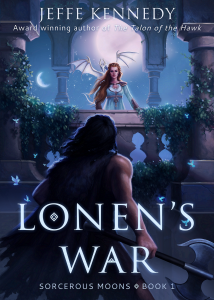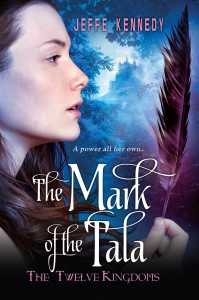
I received a very interesting set of questions on Facebook from a reader who just finished reading WARRIOR OF THE WORLD. They’re such good questions that they deserve a thoughtful answer, so I decided to do that here. I hope she doesn’t mind!
She said:
…one of the things that I feel like you do extremely well is create empathy for both “sides” of a war/ disagreement/conflict. In art, as in life I see most often empathy/sympathy being created with blame/making the other side the “bad guy”, etc. You seem to…skip that part? So this is a two part question:
1. Do you find yourself able to do that within your own life? (like are you less of a blamer, more of a solution finder – I’m working so so so hard on that with my kids and am interested in the HOW of it)
2. And two, HOW do you do it, first within yourself, and then secondarily, how do you WRITE it so that I, as a reader, don’t find myself coming down overly hard on one side – how do you make the gray the overwhelming tone, rather than the black and white?
So, here are my answers, plus a few more thoughts.
- I would say that I’m more of a solution finder than a blamer. I’m an INTJ and the Thinker/Judger very much plays into a lot of how I approach life. I’m pretty good at stepping back and taking an analytical, less emotional view of a situation. I think that kind of objectivity and critical thinking is key to problem-solving. It’s not always easy – and sometimes I have to wait for the initial emotional storm to blow through before I can get to that place of greater objectivity (none of us can ever be fully free of bias) – but once I can reply the situation from their point of view, then I can get closer.
- Part of being a storyteller is being able to tell ALL sides of a story, so that’s part of how I do this, both in fiction and in real life – I look at how I’d tell the story from THEIR point of view. In life, one my mantras is “compassion and tolerance.” I don’t always *practice* this as well as I’d like to, but if someone pisses me off in traffic, for example, I try to imagine the person driving that car is one of my closest friends, who I adore, but who is a TRULY TERRIBLE driver. Or I imagine their story – they just had a big fight with their spouse, or they’re sick and feel miserable and just need to get to the store to pick up their prescription. That makes it much easier for me to forgive their behavior and move on. One of the truths of life is that everyone is struggling with something. We may not know what it is, but we can either try to find out (not always practical) or imagine what their story might be (always an option). So, I think as a writer, what I do is give you a window into the story of the people on the other side of the conflict. I suppose that, in my heart, I don’t believe in good or evil – I think everyone does what they do for what they see as very good reasons of their own. Some of those reasons have horrible consequences for other people, but they do have them. Understanding those reasons helps us to cut off their actions at the root.
Looking at the story in WARRIOR OF THE WORLD, part of what I wanted to get was the female perspective on war. I think a whole lot of war – both in real life and in fiction – tends to be driven by male aggression. It’s not across the board, but I think it’s a strong driver, particularly in this century when so many wars have been driven by political ambitions and corporations wanting to monopolize resources. The war pending in this book is about controlling scarce resources, with those on the lean end wanting to attack those with plenty. The women in the book point out that just because one arm of a society is aggressive, however, doesn’t mean that everyone in that culture feels the same. A large part of any society gets dragged along with whatever the leaders decide – and often those being dragged along are women, children, the elderly, and those unable or unwilling to be warriors, for whatever reason. I think this was maybe different in other wars. I like to imagine the women of the American Revolutionary War and Civil War were much more involved because those were conflicts that directly impacted daily living and quality of life.

Now, men often criticize women writers for focusing on what they perceive as minutiae. Naturally, however, the person who sits down at table to consume a meal has a very different perspective than the person responsible for putting three nutritious meals on that table every day. This doesn’t have to fall out along gender lines, but it often does, particularly in the last century. When you have pretty much one gender in another country fighting a war and the other back at home, then you know which one is thinking about the daily minutiae of living. So, in this story, I wanted to deliberately draw that out and have the women of the family say, “Hey, who are you raging at? Do you think the babies and eldsters want to attack you?” They’re taking that position of recognizing the other’s story.
This is something that’s important to me as a person and as a writer, which is part of why I love the trope of enemies-to-lovers. That’s part of why I put LONEN’S WAR at the top, though I also explored similar themes in THE MARK OF THE TALA. That LONEN’S WAR cover encapsulates a great deal of that theme for me – of confronting the supposedly monstrous enemy and coming to not only understand them, but to love them. That whole Sorcerous Moons series is about two warring cultures coming together in part by learning each other’s stories.
How’s that for a long answer?

Because detailed troop movements, supply distribution, gear-fixing, weapons porn, etc. isn’t minutiae… uh huh … give me the “women’s” perspective any day, over that.
One of the reasons Ariel is my favorite Disney Princess is because she refuses to believe the hype that “all humans are bad”
You’re so right! Apparently that kind of minutiae is INTERESTING, however!